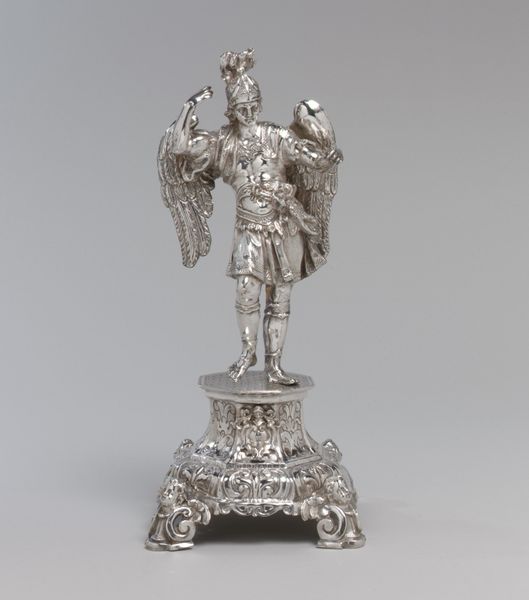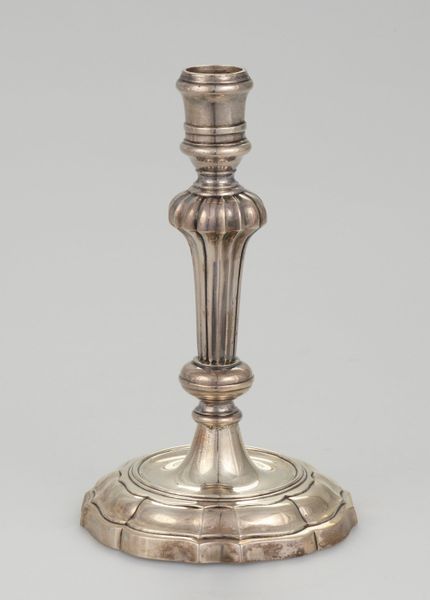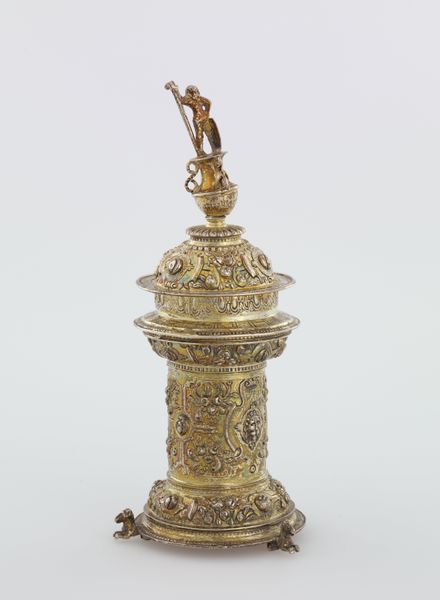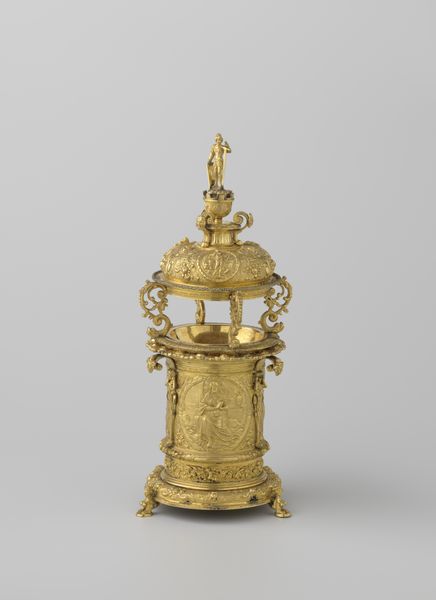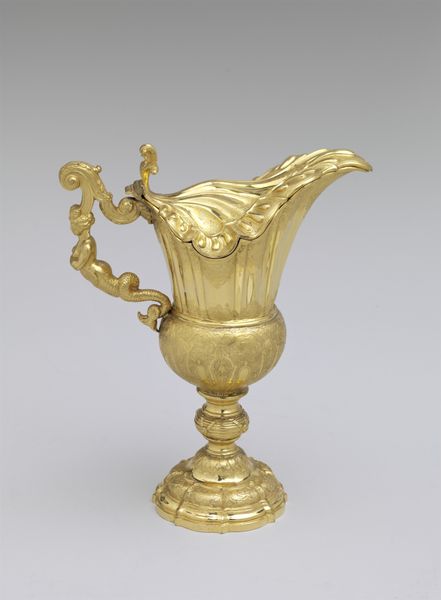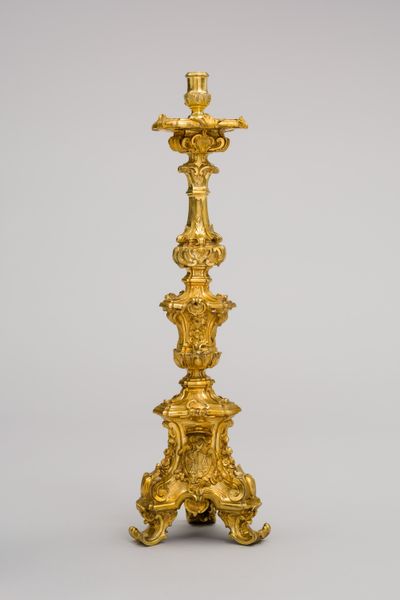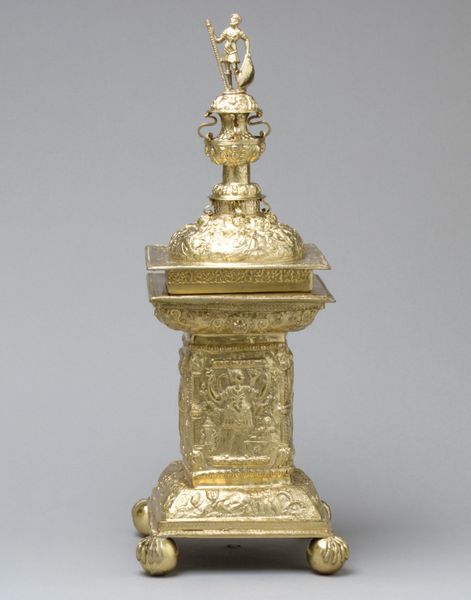
Cloches (dish covers), coolers, soup tureens, sauceboats, salt cellars, pepper and mustard pots c. 1819
0:00
0:00
metal, sculpture
#
neoclacissism
#
metal
#
figuration
#
sculpture
#
decorative-art
Dimensions: height 32.2 cm, width 19.2 cm, depth 12.2 cm, weight 1900 gr
Copyright: Rijks Museum: Open Domain
Editor: We're looking at a piece by Jean-Baptiste-Claude Odiot, from around 1819: "Cloches (dish covers), coolers, soup tureens, sauceboats, salt cellars, pepper and mustard pots". The detail in the metalwork is stunning. I’m really struck by how these female figures are positioned, almost like they're guardians of fine dining. What do you make of it all? Curator: Absolutely. What we're seeing here isn't just ornamentation; it's a statement. These figures, likely referencing classical antiquity, were strategically employed by the French aristocracy during the Neoclassical period to signal legitimacy and power. What do you think their robes suggest, and how might that relate to post-revolutionary France? Editor: I guess the drapery and the figures hark back to an idealized past, but aren't these also objects of immense luxury? How did this all sit in a society still reeling from revolution? Curator: Precisely. The resurgence of such opulent objects following the Revolution reveals a complex interplay between the desire for social order and the reaffirmation of class hierarchies. This is about the re-establishment of cultural norms and values. It asks us to question who benefits from the revival of classicism and what that means for broader society. Note, how the gendered sculptures also point to power dynamics at play in those post revolutionary years. Editor: So, the act of dining, elevated to an almost theatrical experience, became a stage for social and political statements? Curator: Exactly! Consumption became a key means for reasserting status and solidifying the new power structures, subtly erasing the recent upheavals, all the while drawing from an ancient history which then was largely understood from a patriarchal lens. These pieces prompt us to think critically about how aesthetics often serve political and ideological agendas. Editor: That’s a fascinating perspective; I hadn’t considered how deeply embedded these objects are within the shifting social currents of the time. Curator: Me neither! Thinking through how seemingly simple art can be charged with complexity reminds me to reflect upon our contemporary cultural productions too.
Comments
rijksmuseum about 2 years ago
⋮
A confidante of the Russian empress commissioned this 140-piece service, several items of which are displayed here. Silversmith Odiot, the painter Prud’hon and the architect Cavelier proudly presented the new models at the 1819 French national exhibition of decorative art. Notable are the kneeling angels supporting the soup tureen, which are characteristic of the late Empire style.
Join the conversation
Join millions of artists and users on Artera today and experience the ultimate creative platform.



